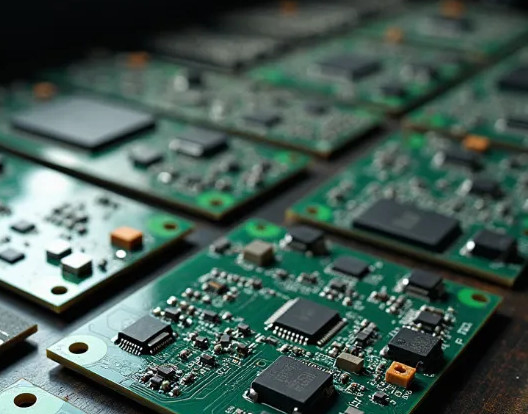Introduction to Conformal Coating For Industrial Sensors
In today’s world, electronic devices are increasingly being exposed to extreme environments, demanding higher reliability and durability. One key technology that plays a crucial role in ensuring long-term performance and stability of our sensors is conformal coating. This special protective layer provides defense against environmental factors that could cause damage.
What is Conformal Coating?
Conformal coating is a specialized protective layer applied to electronic components and circuits to shield them from environmental stressors. The coating conforms to the shape of the underlying components, providing a thin yet durable layer that protects sensitive parts from moisture, salts, chemicals, dust, and other contaminants.
Why Use Conformal Coating?
The importance of conformal coating cannot be overstated, particularly in industries where electronic devices are exposed to harsh conditions. Here are some of the main reasons why applying a protective coating to our pressure and level sensors is essential:
Moisture Protection: Conformal coating creates a moisture-resistant barrier, preventing water from penetrating the sensors. In high-humidity environments, moisture can cause corrosion, short circuits, or other failures. The protective layer ensures that the circuits continue to operate without being compromised by moisture-related issues.
Salt Fog Resistance: For sensors used in coastal or marine environments, salt fog can be a significant concern. Salt particles in the air can accumulate on surfaces and corrode metal components. Conformal coating provides a barrier to prevent salt from coming into contact with the electronic circuits, thereby prolonging the lifespan of the device.
Mold and Fungus Prevention: Electronics exposed to humid conditions are prone to mold growth, which can damage components and affect functionality. Conformal coatings contain properties that inhibit the growth of mold and fungi, reducing the risk of microbial contamination and ensuring the reliability of the product.
Electrical Insulation: In addition to environmental protection, conformal coatings provide electrical insulation. They help prevent accidental short circuits by insulating sensitive components, especially in high-voltage or high-power applications.
Dust and Debris Protection: Conformal coating also helps prevent the accumulation of dust, dirt, and other particles on electronic components, which could otherwise lead to malfunctions or interfere with the proper functioning of the device.
Improved Durability and Longevity: The protective layer of conformal coating significantly increases the durability of electronic products. By shielding components from environmental stressors such as UV rays, extreme temperatures, and chemicals, the coating ensures that the device can operate reliably over a long period.

Applications of Conformal Coating
The need for conformal coating for sensors typically arises in the following environments:
Coastal Areas: Due to the high salt content and humidity in the air near the sea, conformal coating is especially important. Salt fog and moisture can accelerate the corrosion of metal components and affect the normal operation of circuit boards.
Rainy Regions: Continuous rainfall and high humidity environments can lead to mold growth and corrosion of components, causing equipment failure. Therefore, moisture protection, waterproofing, and mold prevention are essential.
Cold Regions: In cold climates, low temperatures may cause electronic devices to freeze or malfunction. Conformal coating in these environments should not only provide moisture and mold protection but also offer anti-freeze functionality.
Chemical Industry: Chemical gases and liquids are highly corrosive, and electronic products exposed to such environments are prone to damage. Therefore, special corrosion-resistant coatings are necessary in this industry.
Agricultural Sector: In agricultural production, equipment is often exposed to extreme conditions such as drought, flooding, and strong winds. Conformal coating can effectively provide water resistance, wind protection, dust prevention, and corrosion resistance, ensuring the long-term stable operation of agricultural equipment.
Conformal Coating Application Methods
There are several techniques for applying conformal coatings, each suited to different production needs:
Spray Coating: This method involves spraying the coating onto the components using an airbrush or automated spraying system. It’s ideal for larger production volumes and can provide a uniform coating on complex shapes.
Dip Coating: The electronic assembly is dipped into a coating solution, ensuring complete coverage. This method is suitable for large batches and is often used for components that have consistent, flat shapes.
Brush Coating: Used for small production runs or for manual application to specific areas, this method involves using a brush to apply the coating. It is cost-effective but may not provide as uniform a layer as spray or dip coating.
Selective Coating: This technique applies the coating only to specific areas of the circuit board, leaving other components uncoated. It is particularly useful when certain parts, such as connectors or switches, need to remain free from coating.
Conformal coating requires additional process and costs, so generally not all the sensor manufacturers or products apply this coating. We apply this technical process according to the specific application and requirements of our customers. If the coating is required for the working condition, we will never skip this step.
To know more details, contact us.





